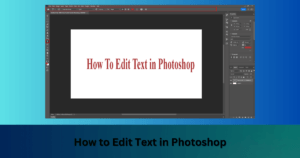Stunning product photos are essential for every business to attract customer’s attention and enhance sales.
Flat lay photography, with its unique top-down style, is effective to showcase your products in an organized way.
Taking high-quality photos can help to enhance your brand image. However, most businesses hire professional photographers, which is costly, especially for startups or small businesses.
The good news is now you do not need to spend money to achieve amazing results. With a little guidance, you can create beautiful flat lay product photos on your own.
In this easy-to-follow guide, we will teach you tips and techniques to take stunning flat lay product shots to shine your business. Let’s explore Flat Lay Product Photography Tips
How to Take Flat Lay Product Shots ( Step by Step)

If you want to take excellent shots of flat lay products, follow this step-by-step guide. It will not only ensure perfection but also make your job easy and smooth.
Step 1: Choose your products
First of all, determine the products you want to feature. You can select a single product or take a shot at a few products collectively.
For example, if you want to showcase skincare items, you can add moisturizer, cleanser, towels or other items. While selecting items ensure they should be in contrast in terms of color, theme and texture.
Step 2: Select a clean background
The background has great importance for the products’ photos. So, to ensure a good result, always prefer a clean background. With a neutral background, you can make your product more appealing.
A few of clean background colors you can choose from light grey, beige or white. However, depending on your products, you can also experiment with textures like marble, fabric, and wood to add character.
Step 3: Arrange the Items
You can also make your products look more attractive with the right arrangement. It is essential, especially, while taking flat lay product photography. You can arrange these products in the background.
While arranging the products, place the main product you want to showcase on the front and build others around it. You can place the smaller items to fill the space, however, avoid overcrowding the frame.
Step 4: Focus on lighting
Lighting for flat lay photography is essential. Natural light is the best option for flat lay photography. Set up near a window or outdoors where you can capture soft, even light without harsh shadows. If natural light is not available, use a lightbox or softbox to recreate the effect.
Avoid direct sunlight, as it can create strong shadows and wash out the colors. Use reflectors to bounce light back onto the products if necessary. Ensure the products are placed in a clear place.
Step 5: Shoot from above
The key to a flat lay is shooting directly from above to capture the full layout. Use a tripod to ensure your camera or smartphone remains stable and aligned with the center of the frame. For the best results, ensure the entire shot is level and evenly spaced.
While taking product photos, ensure you take shots while your camera is completely still. It will prevent blurred images. Doing so you can make your product photos best.
Step 6: Adjust your camera settings
Modern cameras come with new features that can easily enhance your products’ photo quality. Use a high-resolution setting on your camera or smartphone for the best quality.
For DSLR users, keep the aperture small (f/8 or higher) to maintain focus on all elements. Adjust ISO settings to avoid grain, and choose a fast shutter speed to avoid blur.
Step 7: Edit your photos
After shooting, refine your images using editing software. Brighten the image, enhance colors, and sharpen details. Avoid over-editing, as you want the products to look realistic. Cropping and straightening the image can also perfect your flat lay.
We recommend you to take some training or help from an editor to make your photos look more attractive. While editing, make sure you have touched each angle of the image and that there is nothing distracting.
BONUS TIPS
Here we are sharing some helpful tips that may make your flat lay photography ideas more stunning.

Things to do for flat lay product photography
- Opt for neutral or minimal backgrounds to let your products stand out. White, marble, or wood textures often work best.
- Use soft, natural light from windows to avoid harsh shadows. Diffused light enhances product details.
- Arrange items thoughtfully. Use the rule of thirds or symmetry to create balanced, visually appealing layouts.
- Add complementary props that enhance the product’s story. Keep them minimal to avoid distraction.
- Stabilize your camera or phone to capture sharp images from above. This ensures consistent angles.
- Shoot directly overhead for a true flat lay effect, maintaining a 90-degree angle.
- Post-editing can refine your image. Adjust brightness, contrast, and color balance to highlight the product.
Things to avoid for flat lay product photography
- Avoid too many objects around your main product. Keep the background simple to highlight the product without distractions.
- Steer clear of direct, harsh light as it creates strong shadows. Use natural, diffused light or softbox lighting for even illumination.
- Avoid too many bold colors in the frame. Stick to a clean color palette that compliments the product to maintain visual harmony.
- Avoid uneven or slanted shots. Ensure the camera is positioned directly above the products for a perfectly symmetrical look.
- Don’t overcrowd the scene with too many props. Ensure props add value rather than take attention away from the main product.
- Avoid ignoring shadows; ensure they are soft and enhance the product’s texture instead of becoming distracting.
Photo Editing for Flat Lay Product Photography

Editing can help you a lot to improve your flat product pictures quality. Follow these editing tips and edit your product photos like a pro.
Step 1: Set up the lighting
Ensure even lighting to avoid harsh shadows. Use natural light or softbox lighting to create a soft, balanced look.
Step 2: Adjust exposure
Increase brightness or contrast to make the image clear and vibrant. Ensure the product stands out without overexposing the background.
Step 3: Crop the image
Trim the edges of the photo to center the product. Make sure the composition looks balanced.
Step 4: Fix white balance
Adjust the white balance to make colors appear natural. This is essential for making the product look true to life.
Step 5: Sharpen the image
Enhance the details by sharpening. This makes the product crisp and clear.
Step 6: Remove imperfections
Use spot-healing tools to eliminate dust, smudges, or unwanted elements.
Step 7: Final touches
Add any filters or adjust tones slightly to match your brand’s style, then save the final image in high resolution.
Final Words on Flat Lay Product Photography
Flat lay photography is an excellent way to showcase your products beautifully. With a few basic skills you can take excellent shots like a professional. If you follow our guidelines above you can save your time and money too. Once you have taken the photo of your products do a little editing to enhance their visual appeal.














